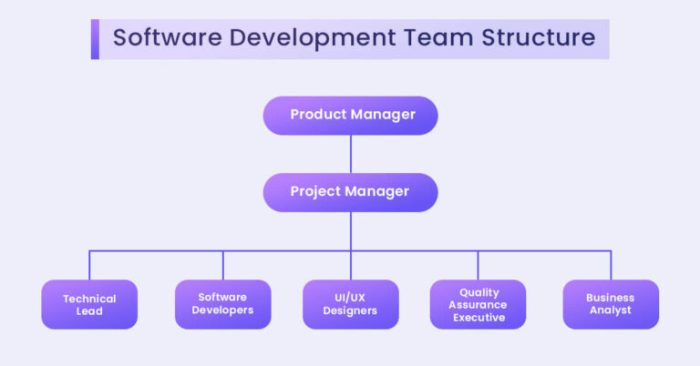In today’s globally interconnected world, businesses are constantly seeking efficient and cost-effective ways to build and maintain their software applications. Nearshore software development has emerged as a popular solution, offering a compelling blend of proximity, cultural understanding, and cost savings. This comprehensive guide delves into the intricacies of nearshore software development teams, exploring their benefits, challenges, and best practices for successful implementation.
Understanding Nearshore Software Development
Nearshoring, in the context of software development, refers to outsourcing software development projects to a country geographically closer to your own. Unlike offshoring, which involves outsourcing to a geographically distant location (e.g., India or China), nearshore outsourcing typically involves countries within the same time zone or a similar time zone, or at least within a few hours’ difference. This proximity offers significant advantages in terms of communication, collaboration, and project management.
Key Advantages of Nearshore Software Development Teams
- Reduced Time Zones Differences: Easier communication and collaboration due to similar working hours.
- Cultural Understanding: Shared cultural values and business practices often lead to smoother interactions and fewer misunderstandings.
- Cost Savings: While not as drastically low as offshoring, nearshore development still offers significant cost advantages compared to in-house development.
- Improved Communication: Face-to-face meetings are more feasible and communication barriers are often minimized.
- Easier Project Management: Closer proximity facilitates better oversight and control over the development process.
- Faster Turnaround Times: Real-time collaboration can lead to quicker project completion.
- Access to Specialized Talent: Nearshore locations often possess a pool of skilled developers with specific expertise.
Choosing the Right Nearshore Location
Selecting the appropriate nearshore location is crucial for project success. Several factors should be considered:
Factors to Consider When Choosing a Nearshore Location:
- Geographic Proximity: Minimize time zone differences for seamless communication.
- Cost of Development: Compare hourly rates and overall project costs.
- Language Proficiency: Ensure effective communication by choosing a location with strong English proficiency (or your native language).
- Technical Skills: Assess the availability of developers with the required expertise in your specific technologies (e.g., Java, Python, .NET, React, Angular).
- Legal and Regulatory Framework: Understand the legal and regulatory environment to protect intellectual property and ensure compliance.
- Infrastructure and Technology: Evaluate the availability of reliable internet access and modern development infrastructure.
- Cultural Compatibility: Consider cultural differences and their potential impact on project dynamics.
Popular Nearshore Locations
Several countries have established themselves as popular nearshore destinations. These include:

Source: softvilmedia.com
- Mexico (for US companies): Offers a blend of cost-effectiveness, proximity, and a growing pool of skilled developers.
- Canada (for US companies): Known for its high-quality developers and strong intellectual property protection.
- Latin American Countries (for US companies): Countries like Colombia, Argentina, and Brazil are gaining traction as nearshore hubs.
- Eastern European Countries (for Western European companies): Countries like Poland, Ukraine, and Romania offer a combination of cost-effectiveness and skilled developers.
Challenges of Nearshore Software Development
While nearshore development offers numerous benefits, it’s essential to acknowledge potential challenges:
Potential Challenges:, Nearshore software development team
- Communication Barriers: Even with similar time zones, language differences or cultural nuances can create communication hurdles.
- Managing Remote Teams: Effective remote team management requires robust project management tools and clear communication protocols.
- Intellectual Property Protection: Establishing clear legal agreements to protect your intellectual property is paramount.
- Cultural Differences: Understanding and adapting to cultural differences can be crucial for successful collaboration.
- Time Zone Differences (even small ones): While minimized, small time differences can still impact real-time collaboration.
- Finding and Retaining Talent: Competition for skilled developers in popular nearshore locations can be fierce.
Best Practices for Successful Nearshore Development
To maximize the benefits and minimize the challenges of nearshore software development, consider these best practices:
Best Practices:
- Thorough Due Diligence: Carefully vet potential nearshore partners to assess their capabilities, experience, and reliability.
- Clear Communication Protocols: Establish clear communication channels and protocols to ensure seamless information flow.
- Robust Project Management: Utilize robust project management tools and methodologies (e.g., Agile) to track progress and manage risks.
- Strong Legal Agreements: Secure legally sound contracts that protect your intellectual property and define responsibilities.
- Regular Communication and Feedback: Maintain regular communication with your nearshore team to address concerns and provide feedback.
- Cultural Sensitivity Training: Consider cultural sensitivity training for your team to foster better understanding and collaboration.
- Invest in Relationship Building: Building strong relationships with your nearshore team can enhance trust and collaboration.
Frequently Asked Questions (FAQ)
- Q: What is the difference between nearshore and offshore development?
A: Nearshore development involves outsourcing to a geographically closer country, while offshore development involves outsourcing to a geographically distant country. Nearshoring typically results in better communication and collaboration due to proximity and similar time zones.
- Q: Is nearshore development more expensive than offshore development?
A: Generally, nearshore development is more expensive than offshore development but less expensive than onshore development. The cost difference is often balanced by improved communication, collaboration, and project management.
- Q: What are some popular nearshore locations for US companies?
A: Popular nearshore locations for US companies include Mexico, Canada, and various Latin American countries.
- Q: How can I ensure the security of my intellectual property when using a nearshore development team?
A: Establish clear intellectual property rights clauses in your contracts, conduct thorough due diligence on potential partners, and use secure communication channels.
- Q: What are the key benefits of using a nearshore software development team?
A: Key benefits include reduced time zone differences, improved communication, cultural understanding, cost savings, and access to specialized talent.
Conclusion: Nearshore Software Development Team
Nearshore software development offers a compelling alternative to in-house development and traditional offshoring. By carefully considering the factors discussed in this guide and implementing best practices, businesses can leverage the benefits of nearshore teams to build high-quality software applications efficiently and cost-effectively. Remember to prioritize clear communication, robust project management, and strong legal agreements to ensure a successful partnership.
Call to Action
Ready to explore the potential of nearshore software development for your next project? Contact us today for a free consultation and let us help you find the perfect nearshore partner to meet your specific needs.
User Queries
What are the key advantages of a nearshore development team compared to an offshore team?
Nearshore teams offer reduced time zone differences, improved communication, and easier travel for collaboration, leading to faster project turnaround and better problem-solving.
How can I ensure cultural compatibility with a nearshore development team?
Thorough due diligence, including researching the team’s cultural background and communication styles, and potentially conducting initial meetings to assess compatibility, is crucial.
What legal and contractual considerations should I address when working with a nearshore team?

Source: sevencollab.com
Consult legal counsel to ensure contracts cover intellectual property rights, data protection, payment terms, and dispute resolution mechanisms specific to the country where the team is located.

Source: prismetric.com
How do I effectively manage a nearshore development team remotely?
Establish clear communication channels, utilize project management tools, and schedule regular meetings (both virtual and in-person if feasible) to maintain transparency and accountability.
